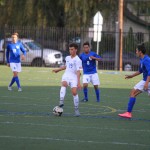What is it:
Knee meniscus disorders involve the medial meniscus and lateral meniscus, which are two pads of cartilage in the knee between the femoral and tibial condyles (the joint surfaces of the femur and tibia). The most common disorder is a tear of the meniscus.
Important Facts:
The outcome of meniscectomy is usually good, if the individual does not have underlying joint disease such as osteoarthritis or rheumatoid arthritis or instability from ligament damage. Most individuals can return to previous activities, including athletics.
Statistics:
Statistics show that about 61 of 100,000 people experience an acute tear of the meniscus. Treatment Duration: Conservative treatment may include a compression bandage, a removable knee immobilizer, and nonsteroidal anti-inflammatory drugs for relief of pain and swelling and quadriceps exercises.
Do’s & Don’ts:
Standing and walking may need to be limited temporarily. Squatting, kneeling and crawling may need to be limited permanently.
Common Myths:
MRI’s are 100% accurate for meniscal tears. At the other extreme, MRIs can over read conditions: One of the most questionable practices in Radiology is the reporting of normal signal changes in meniscal cartilage as “tears”. In the early days of MR imaging, these signal changes were graded from I to III. Grade I and II tears do not represent changes visible to the naked eye. I was most shocked a few years ago when a radiologist showed me how he could simply dial in a Grade I or II “tear” by turning a knob on his MRI console!
Jesse Elliott, DPT, Licensed Doctor of Physical Therapy with Siskiyou PT
We offer Same Day Appointments for those that are post surgical or medically urgent. We offer discounts or payment plans for those that have high insurance deductible health plans, no insurance or have a financial hardship.
Call now to get your life back, 800-958-2588 or visit SiskiyouPT.com
If you like this post or have a question. Comment below.



